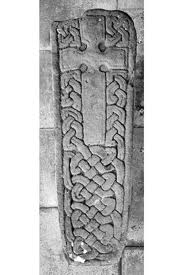Ancient carved stones re-discovered in the Scottish village of Inchinnan
Inchinnan (Scottish Gaelic: Innis Fhionghain) is a village in Renfrewshire (Siorrachd Rinn Friù), in the west central Lowlands of Scotland. It is an area steeped in history and the name of the village is derived from a combination of the Gaelic word 'Innis', which an island or low-lying land near a river and the name of the 9th century Saint Inan. He is reputed to have come from Iona (Scottish Gaelic: Ì Chaluim Chille) in the Inner Hebrides, which was a centre of Gaelic monasticism for four centuries. The monastery on Iona was founded in 563 by the monk Columba, also known as Colm Cille, who is credited with spreading Christianity in what is today Scotland.
In Scotland, as with other parts of the Celtic world, local groups with a keen interest in culture, heritage and history play a pivotal part in uncovering the ancient history of an area. Not least of which is the Inchinnan Historical Interest Group. Included in the group's stated objective is to "advance the education of the public in the history, culture and heritage of Inchinnan and its surrounding area." So it was interesting to read on their website and facebook page about the remarkable results of the investigations they instigated into three ancient carved stone slabs.
The stones were located in Inchinnan parish church and had been thought to date back to around the 12th century. They originally came from the now demolished All Hallows Church. Which was on the site of an older church, dedicated to St Conval. Saint Conval who died c.630 was an Irish-born missionary in Scotland who is thought to have established a monastery near the site around AD 600. Now, using the latest imaging process, a new analysis of the ancient Inchinnan carved stones has revealed them to be a number of centuries older than first thought. The style of carving dates them to the 9th-century, to the time of the previously discovered Govan Stones. A time of the lost Celtic Kingdom of Strathcyde, which developed strong connections with the Scandinavian world following Viking interventions in the area which began in the 8th century AD.
The story of the Inchinnan stones was the subject of a press release by the Inchinnan Historical Interest Group towards the end of last year. It has since been picked up by the Scotsman newspaper and given national coverage in Scotland. It demonstrates the importance of all such locally focused groups and organisations in promoting, maintaining and discovering all aspects of culture, heritage and history. Their role can never be underestimated and the Inchinnan Group is a good example of this. Details of their activities can be found on their website, but there is likely to be similar such groups in the area in which you live.






